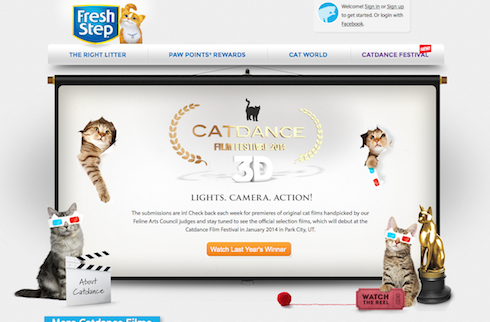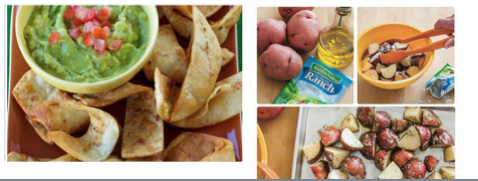By adaptive - October 14th, 2013
Clorox is a global company with leading household including: Green Works cleaning products, K C Masterpiece dressings and sauces; and Brita water filtration products.
As group manager of social media at The Clorox Company, Helen has spent the last three years building an in-house social media practice from the ground up, from developing a team of community managers who work across 15 different brands and creating strategies to build lasting relationships with consumers by bringing brands to life in the social space.

What are the key drivers behind Clorox’s use of social media?
It’s all about the people. Not only are social platforms giving us great insights on the needs of our consumers, they’re also allowing us give more dimension to our brands and build lasting relationships with fans. The trick is to find that sweet spot between what makes sense coming from our brands, and what consumers find engaging or might be looking for.
Everyone’s looking for coupons or a good deal, but you might be surprised by how much our fans love a perfectly timed one-liner or an unexpected but helpful titbit that’s genuine and real. Platforms and technologies will come and go, but the way consumers connect with brands on social is here to stay – and so are we. A single post might not move the needle on sales right away, but added up over time, a strong social media presence can tell a more compelling story about our brands.
What organizational models with social media does your company use and why?
We’re currently organized by what the Altimeter Group’s Jeremy Owyang calls the hub-and-spoke model. Before I joined the company three years ago, all social media was being managed and executed by our agency partners. With an ever-increasing number of platforms to engage and the pressure to act in real time, we realized that we had to own some of the responsibilities in house to make it happen.
We are still working hand-in-hand with our agencies, but we did bring day-to-day community management in house. We also created a cross-functional social oversight team of internal stakeholders from social, digital, PR, media, legal, consumer care, and analytics. Most the folks on this team also work on cross-functional brand teams.
This model allows us to jump quickly on social opportunities and also brings governance and consistency over our social operations. But more importantly, we’re able to scale by divvying up the work, get really integrated, and share content ideas, listening for real-time social opportunities, best practices, and news on platform changes. It takes a small village to stay current and relevant on social.
How does your company value the networks it has a presence on?
Our social communities are a hugely important part of how we connect with our consumers. The Clorox Company’s mission statement is to make everyday lives better everyday. And it’s the perfect way to describe what we do in social. As a CPG company, we don’t have a brick-and-mortar presence where consumers get information or help, or just interact with real humans. Social media allows real employees to be there for our consumers when and where they need us.

How much pressure is there to show ROI with the social media you use?
Like many CPGs, we’re working to understand the true ROI of social. We’re currently using several different tactics to chip away at this. The first attempt was by folding social impressions in as earned PR into our MMM to measure the impact of social on sales. The second was several Datalogix studies on brand lift and ROI. Currently, we’re planning to test a larger scale investment in Facebook to measure the value of a targeted and tightly integrated Facebook campaign that’s fully supported with strategy, creative, and advertising. So far, we’re seeing that our work on social is proving efficient. But we’re still in the early stages.
In the meanwhile, we do track core day-to-day metrics that we think are the most important for brand health. This varies a bit from platform to platform, but generally we look at hard numbers like reach and impressions, engagement rates on creative, and follower count. But we do rely on soft metrics, such as sentiment, message resonance, and context, to get a better idea of the big picture. There’s always a story behind the “why” of any metric, and you need to understand the context to figure it out. A good community manager can give you that story.
Our community managers also run a ton of test and learns on social, and we can get pretty granular. This can include what’s the best time of day/week for engagement or what types of content are the most engaging for our fans. For example, we did an exercise on Hidden Valley Ranch to determine the best way to promote our recipe content and drive traffic back to our sites. The collage format on the right received 600% more link clicks versus the image on the left, which we grabbed from the recipe page on our website. It took a bit more time to set up and shoot the collage, but we think the results were worth the effort.

How does Clorox approach the mapping of your enterprise to identify where social media should reside in the corporate structure?
The process was organic, especially in the beginning. We’re definitely much smarter and more deliberate now, but it’s something that we had to mature into. There were growing pains along the way, but it helped to have a champion in our director of PR and digital.
One of the first things that helped was dedicating a baseline spend on community management and also setting aside a bit of budget for real-time activations, apart from our planning budgets for year. Social media started out and is still primarily a marketing function here in the US, but we’re beginning to expand across the organization and geographical boundaries as other groups see the value in it for their own objectives. We’re starting to look at opportunities to partner up with sales, innovation, Corp Comm, international marketing, recruiting, and human resources. Social is allowing us to be more integrated and consistent at every consumer touch point.
What is your advice to organisations that are beginning to map their own corporate structure with the view to embedding social media activity within their enterprise?
- Break down silos by creating a cross-functional social team of internal stakeholders.
- If possible and cost effective, think about bringing community management in house. Brands have to have an active part in sustaining genuine relationships with their consumers.
- Make an investment in people, process, and platforms to do the job at scale and in real time.
- Remember to tie back your social objectives to your brand or business objectives.
- Find a social champion at the executive level.
Are there any specific tools you employ that help your business manage its social media activity across multiple departments?
We use Marketwired’s Sysomos Heartbeat and MAP products for social media listening and insights. We also use Clarabridge on top of the Marketwired products for natural listening processing. Spredfast, our social media engagement platform, connects most of our social ecosystems and streamlines approvals, workflows, and engagement actions across channels and brands. We’re also looking into SimplyMeasured to automate social reporting and analytics.
How do you see the management and development of social media in your company evolving over the next few years?
I think the future of social at Clorox revolves around big data, which will allow a more seamless integration between paid, earned and owned media. We are just scratching at the surface of what data can help us accomplish, from segmentation and personalized messaging to predictive analytics and innovation.
For example, I just attended an iMedia conference in San Diego last month, where I heard a lot about DMPs (Data Management Platforms) and programmatic media buying. It’s all pretty amazing stuff. But in order to use it to our best advantage, we have to integrate tightly across functions. Media dollars on social can go much longer and much farther out with smart insights, engaging creative, and the right PR touch. The user experience has to make sense and be seamless for the consumer, no matter where, when, or how they are interacting with us. And smart data can help us get there faster.
Next Reads
November 2013, San Francisco
Embed social media across your company for a more responsive business, more robust reputation and an increase in marketing conversion
Brochure Programme